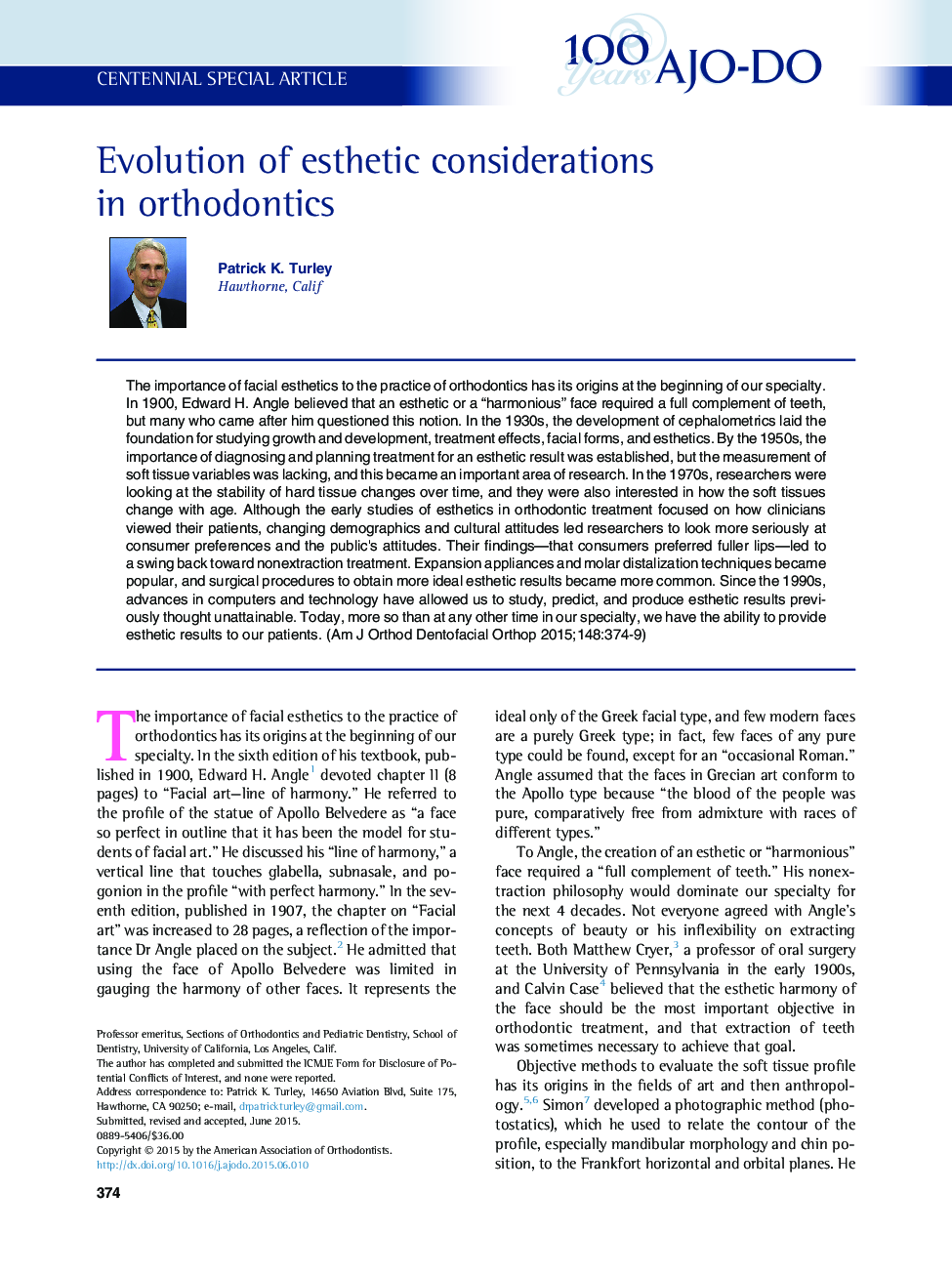| Article ID | Journal | Published Year | Pages | File Type |
|---|---|---|---|---|
| 3115444 | American Journal of Orthodontics and Dentofacial Orthopedics | 2015 | 6 Pages |
•The importance of esthetics in orthodontics dates to the beginning of our specialty.•Cephalometrics laid the foundation for studying esthetics in the 1930s.•Recognition of consumers' preferences led clinicians back to nonextraction treatment.•Surgical procedures enable even more ideal esthetic results.•Today, technological advances allow esthetic results previously thought unattainable.
The importance of facial esthetics to the practice of orthodontics has its origins at the beginning of our specialty. In 1900, Edward H. Angle believed that an esthetic or a “harmonious” face required a full complement of teeth, but many who came after him questioned this notion. In the 1930s, the development of cephalometrics laid the foundation for studying growth and development, treatment effects, facial forms, and esthetics. By the 1950s, the importance of diagnosing and planning treatment for an esthetic result was established, but the measurement of soft tissue variables was lacking, and this became an important area of research. In the 1970s, researchers were looking at the stability of hard tissue changes over time, and they were also interested in how the soft tissues change with age. Although the early studies of esthetics in orthodontic treatment focused on how clinicians viewed their patients, changing demographics and cultural attitudes led researchers to look more seriously at consumer preferences and the public's attitudes. Their findings—that consumers preferred fuller lips—led to a swing back toward nonextraction treatment. Expansion appliances and molar distalization techniques became popular, and surgical procedures to obtain more ideal esthetic results became more common. Since the 1990s, advances in computers and technology have allowed us to study, predict, and produce esthetic results previously thought unattainable. Today, more so than at any other time in our specialty, we have the ability to provide esthetic results to our patients.
